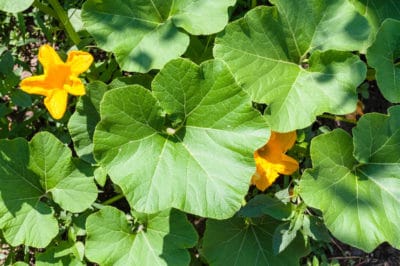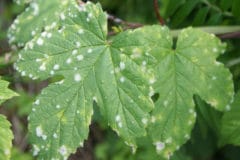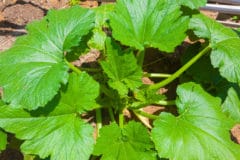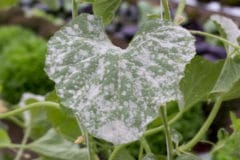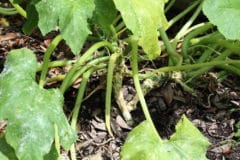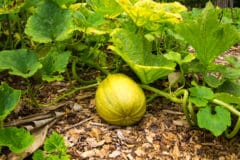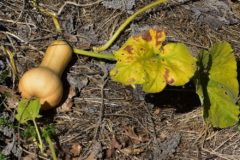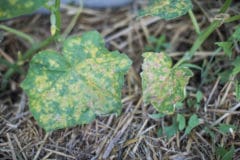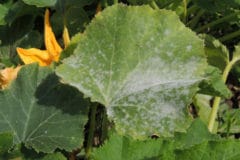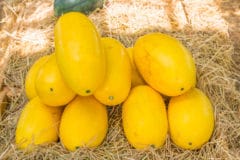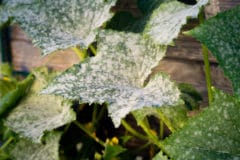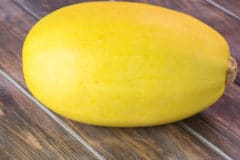Characteristics of Squash Leaves
Most gardeners can readily identify a squash plant by its leaves. All squash plant leaves look similar with some characteristic exceptions. Taxonomists classify the leaves of squash plants in these three ways:
- Squash leaves are exstipulate.
- Squash leaves have an alternate leaf arrangement on stems.
- Squash leaves have simple palmately lobed or palmately compound shapes.
Squash Leaves Are Health Indicators
Squash leaves may be simple to identify, but diagnosing problems with them may not be. The leaves of a squash plant are like their “thermometers,” alerting the gardener to potential health issues. Discolored leaves are the indicator to watch for. An observant gardener is alerted to the stressors in a plant before the problem becomes critical.
Cold Temperatures
Leaf edges can turn olive green to brown with sudden temperature drops. This can occur when the air temperature dips below 50°F(10°C) or the soil temperature is lower than 62°F(17°C).
Downy Mildew
Downy mildew causes leaves to first develop pale green to yellow spots on the upper side. Leaves later turn brown. If high humidity is present, a purplish gray fuzz will develop on the underside of the leaves.
Powdery Mildew
The oldest leaves of a squash plant initially develop pale yellow spots when powdery mildew invades. Soon a white to gray powder can be seen and felt on the leaves. If powdery mildew is not killed, leaves and vines can wither and die.
Squash Vine Borer
The squash vine borer is perhaps the most dreaded pest that attacks squash plants. The borer’s feeding causes yellowing and wilting of the leaves.
Squash Bugs
One of the most common pests to squash plants is the squash bug. The 5/8 inch long gray to dark brown adult and smaller gray nymphs can cause yellowing and wilting of squash leaves.
Viruses
Two mosaic viruses can cause irregular, blotchy to wavy mosaic patterns in shades of yellow and green on squash leaves. The leaves may become distorted, wrinkled and curled.
Bacterial Wilt
This bacterium causes leaves to appear dull green, wilt during the day, and recover at night. Soon the leaves die.
Spider Mites
This 1/50 inch long pest can cause squash leaves to appear pale and stippled. If heavily infested, the underside of leaves can be webbed.
Aphids
This tiny soft-bodied insect can cause squash leaves to turn yellow and wilt. Aphids transmit viruses as well that can be devastating to leaves and entire plants.
Keeping your squash plants healthy through proper watering, feeding, and growing in a proper spot in the garden goes a long way in having problem-free foliage.
